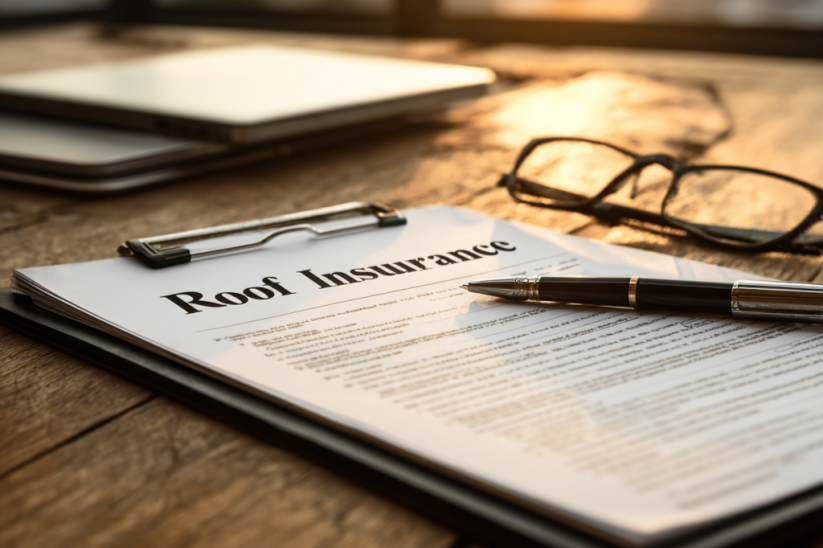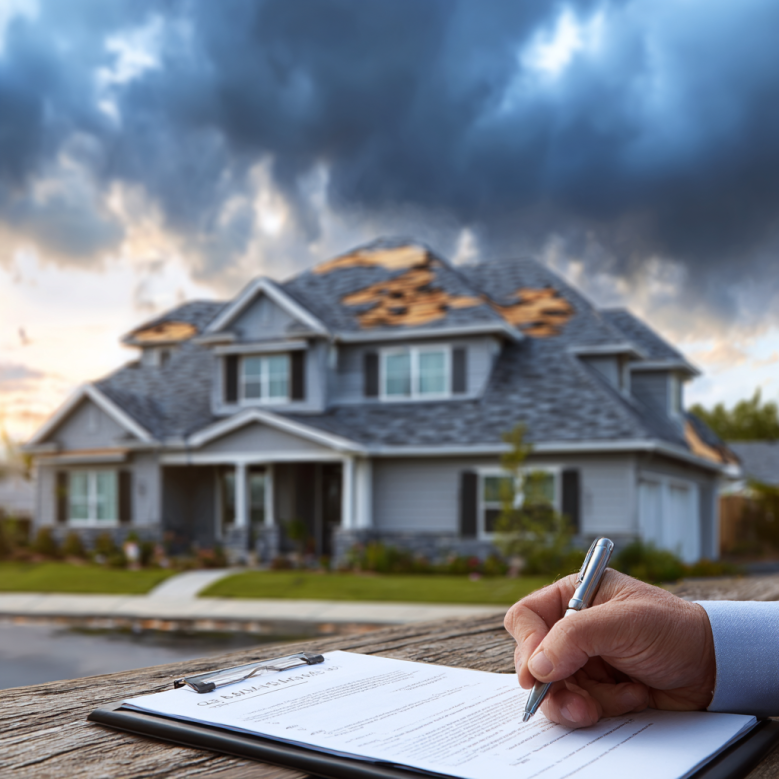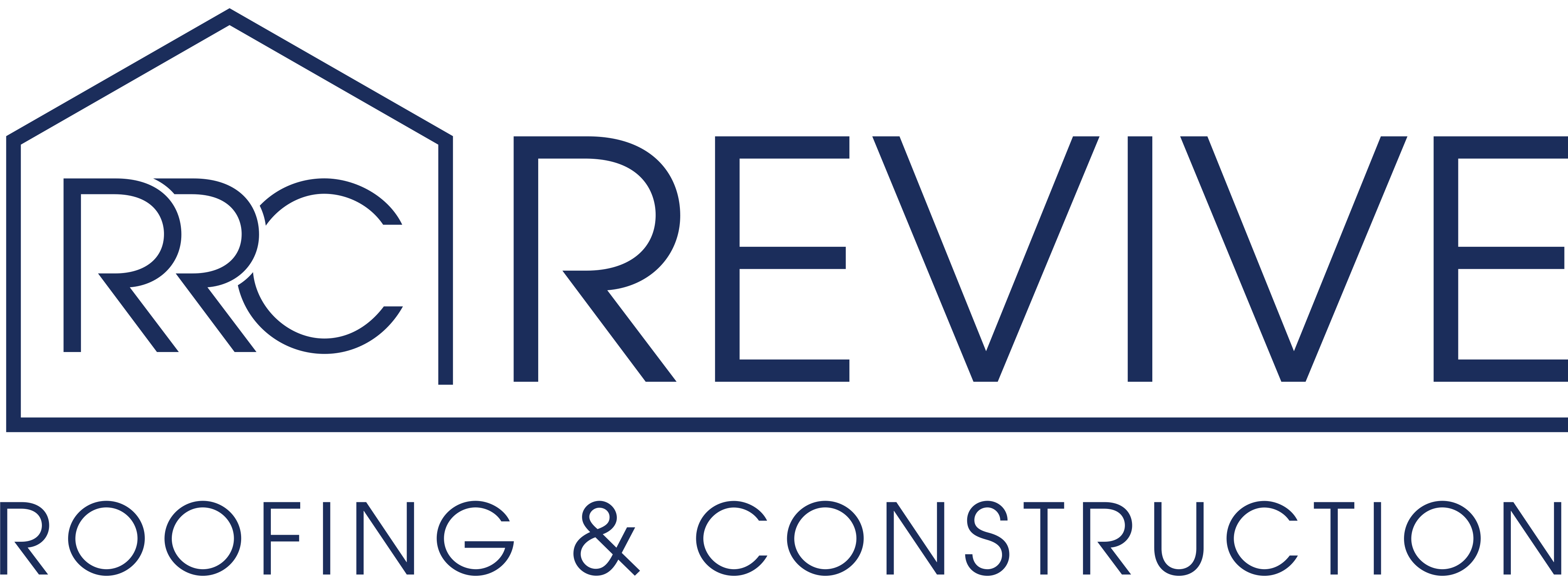What Homeowners Need to Know About Storm Damage Roof Repair
In Florida, your roof does more than protect your home—it’s your first defense against hurricanes, hail, high winds, and heavy rains. Unfortunately, that also means it’s often the first part of your home to suffer damage during a storm. When that happens, navigating the world of Florida roof insurance claims can feel overwhelming.
Understanding the roof insurance claim process can help you avoid costly mistakes, speed up repairs, and ensure your home is protected. Whether you’re dealing with minor wind damage or extensive structural issues after a major storm, knowing how to handle storm damage roof repair with your insurance company is essential.
Why Roof Insurance Claims in Florida Are So Complex
Florida’s unique weather patterns—especially during hurricane season—make the state one of the most common places for roofing claims. In fact, a significant percentage of all homeowners insurance claims in Florida involve roof-related damage.
But while roof damage is common, getting your insurance company to pay for necessary repairs isn’t always easy. Insurers are increasingly cautious about approving Florida roof insurance claims, often requesting detailed documentation and strict evidence of storm-related causes.
This makes it essential for homeowners to be proactive, informed, and supported by a trusted roofing contractor who understands how to work within the claims process.

What Types of Roof Damage Does Insurance Cover?
In most cases, your standard homeowners insurance policy will cover storm damage roof repair caused by:
- Wind damage (lifted or torn shingles, damaged flashing)
- Hail impacts (bruising or cracking of shingles)
- Fallen trees or debris
- Water damage caused by wind-driven rain
However, not all damage is covered. Insurance typically excludes:
- General wear and tear
- Neglect or lack of maintenance
- Damage caused by poor installation or defective materials
To qualify for coverage, the damage must be sudden and accidental, not the result of a roof that was already in poor condition.
Step-by-Step: How to File a Florida Roof Insurance Claim
1. Inspect the Damage Safely
After a storm, take a walk around your property and look for:
- Missing or lifted shingles
- Dented or cracked tiles
- Debris on the roof or in gutters
- Water stains on ceilings or attic sheathing
- Pieces of roofing material in the yard
Don’t climb on the roof yourself—this is dangerous, especially after a storm. Instead, call a licensed contractor like Revive Roofing and Construction to perform a detailed inspection.
2. Schedule a Professional Roof Inspection
Insurers rely on clear documentation when assessing a claim. Our team uses drone technology, photographs, and written reports to identify storm damage and separate it from normal wear.
Having a contractor involved before you call your insurance company is smart. We can tell you whether the damage is likely to be covered—and help you avoid filing a claim that may be denied and go on your record.
3. Review Your Homeowners Insurance Policy
Every insurance policy is different. Before you file your claim, read your policy’s:
- Coverage limits
- Deductibles
- Named storm or hurricane deductibles
- Exclusions
- Required timelines for filing
In Florida, many policies include a higher deductible for named storms—sometimes 2–5% of your home’s value. Understanding this upfront helps you make informed choices.
4. File the Claim Promptly
Don’t delay. Most policies require that damage be reported within a specific window—sometimes as little as 14 days after the storm. File the claim with your insurance company, include the contractor’s report, and keep copies of all communication.
Pro Tip: Provide before-and-after photos if possible. These strengthen your case and make it easier to show the difference caused by the storm.
5. Meet with the Insurance Adjuster
Once your claim is filed, your insurance company will send an adjuster to inspect the roof. Having a trusted roofing contractor present during this meeting can ensure that no damage is overlooked.
We make sure the adjuster sees all affected areas, including damage that may not be visible from the ground. This step is critical for getting the full scope of your repairs covered.
6. Understand Your Settlement Offer
After the inspection, your insurer will provide a settlement amount. It may include:
- ACV (Actual Cash Value): What the roof is worth today, factoring in depreciation.
- RCV (Replacement Cost Value): The full cost to replace the roof, minus your deductible.
- Recoverable depreciation: Paid once the work is completed and documented.
We help you review the estimate and explain any discrepancies between your contractor’s repair estimate and what the insurance offers.
What If Your Insurance Claim Is Denied?
Claim denials are not uncommon in Florida, especially when insurers suspect pre-existing damage or improper maintenance. If your claim is denied:
- Request the denial in writing
- Ask for a re-inspection
- Provide additional evidence
- Work with a licensed roofing contractor who can back up your case
- If needed, hire a public adjuster or consult an attorney
Understanding your rights under Florida law is also crucial. Florida statutes give homeowners specific protections when dealing with insurance disputes.

How Revive Roofing and Construction Can Help
At Revive Roofing and Construction, we work closely with homeowners across Florida to simplify the claims process and ensure damage is accurately documented. Here’s what we bring to the table:
- Comprehensive storm damage inspections
- Photo and drone documentation
- On-site presence during adjuster inspections
- Assistance with paperwork and follow-up
- High-quality roof repairs or replacement using approved materials
Our goal is to make the process stress-free, transparent, and effective—so you can focus on your home, not red tape.
Resources for Florida Homeowners
If you want to dive deeper into the rules and protections around roof claims, these government resources are helpful:
- Florida Department of Financial Services – Guides on insurance complaints and consumer rights
- FEMA Habitability Reference Guide – Overview of home repairs following disasters
These references outline timelines, policy expectations, and how to escalate disputes—especially useful after widespread storm events.
Don’t Wait Until It’s Too Late
Storms are inevitable in Florida, but roof failure and insurance headaches don’t have to be. Whether your home has taken on recent damage or you want to be proactive about a potential claim, we’re here to help.
Get a free inspection now from the experienced team at Revive Roofing and Construction. We’ll assess your roof, document any storm-related damage, and help you determine the right next steps—whether that’s filing a claim, repairing a section, or planning a full replacement.
Trust Florida’s roof insurance experts to help you recover faster, smarter, and with confidence.



